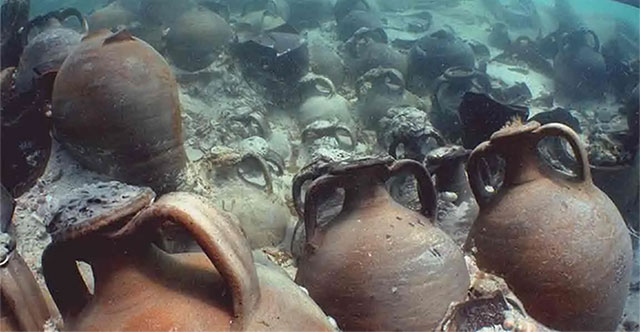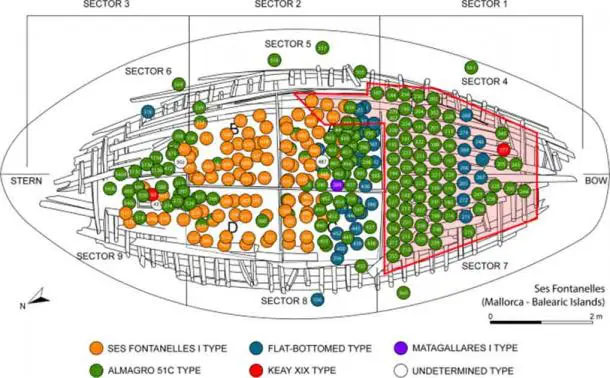
Discovery of 1,700-Year-Old Shipwreck with Remarkably Preserved Artifacts
Summary:
Archaeologists have uncovered an ancient Roman shipwreck in the Mediterranean Sea containing an exceptionally well-preserved cargo of artifacts, including a previously unknown type of amphora. The discovery sheds light on ancient trade routes and provides insights into the lives and practices of the Roman sailors and merchants.
Wrecked in the Mediterranean
During a multi-year excavation off the coast of Mallorca, Spain, researchers led by Dr. Miguel Ãngel Cau-Ontiveros of the University of Barcelona unearthed a shipwreck laden with a trove of valuable antiquities.
Exquisite Artifacts
Among the artifacts discovered was an entirely novel type of amphora, never before seen in any other archaeological site. Amphorae, small pottery vessels with two handles, were widely used in ancient civilizations for transporting liquids and goods.
Intriguing Amphorae
The amphorae found in the vessel's hold were divided into four groups, three of which had been previously identified. The most common type was the Almagro 51c, known from ancient Roman labels as having contained a fish sauce condiment.
Other amphorae included a flat-bottomed type used for transporting fruits, a Keay XIX type, and the newly discovered Ses Fontanelles amphora. This new design was larger and heavier than other types and was likely used for carrying large quantities of olive oil.
Ownership and Cargo
Analysis of the artifacts suggests that the ship belonged to a merchant named Alunnius et Ausonius and was part of a fleet that traded primarily in fish sauce and olive oil, along with fruits.
A New Chapter in Ancient Pottery
The discovery of this novel amphora type holds the potential to unlock a wealth of information, possibly leading archaeologists to an unknown ancient pottery center where this distinct style of amphora was crafted. The style of the artifacts may also provide insights into the ship's origins, destinations, and the ancient trade routes it traveled.
Remarkable Preservation
Despite being submerged in the sea, the vast majority of the artifacts were remarkably well-preserved, protected by a thin layer of grapevine leaves. Certain marine environments, including some in the Mediterranean, offer ideal conditions for preserving ancient shipwrecks and their contents, providing a rich resource for future underwater archaeological expeditions.

